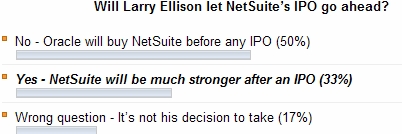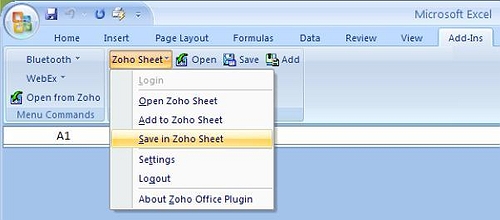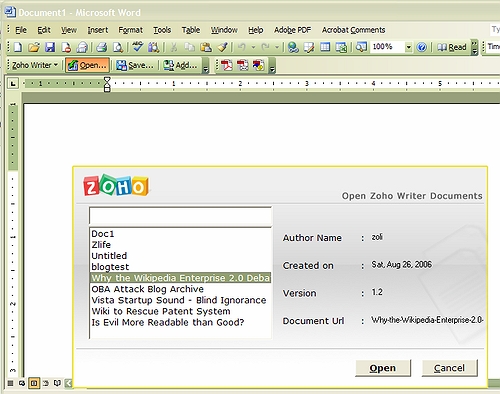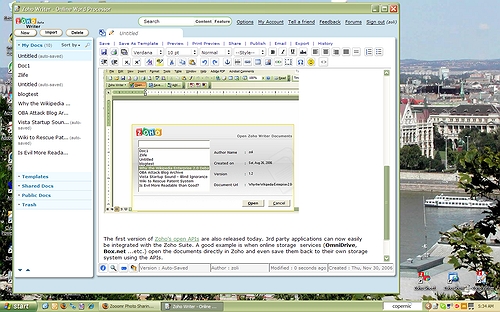(Updated)
Phil Wainewright at ZDNet is running a poll on whether NetSuite will have a chance to go ahead with the long-awaited IPO or it will get folded back into the Empire.

I’m somewhat surprised by the above results, but since this is an early snapshot, please check the live poll for the current vote count.
Surprise or not, acquisition by Oracle is a realistic scenario, considering Larry Ellison’s close to 60% stake in NetSuite. This is certainly fellow Enterprise Irregular Jason Wood’s take.
I tend to believe that NetSuite is better off being an independent business; there are just too many differences for a merger to work well, and I don’t mean only technical, product-related differences. NetSuite is still largely a small business (SMB) player, and that’s a market that requires an entirely different Sales and Marketing approach, amongst others, and Oracle with it’s current “legacy” salesforce just can’t reach this market profitably. If your products are different, your target market is different, your organization, corporate culture are different, where’s the synergy? Big behemoth Oracle would kill NetSuite – Larry is better off with a portfolio approach, cashing in a 10-digit return
Talk about the SMB market – there really is no such thing. “SMB” was sufficient to describe the market to avoid, but now that the software industry is getting ready to actually address the needs of this segment, it’s too heterogeneous to be lumped together.A $100M business is just as different from a ten-person startup as it is from a Fortune 1000 company. When analysts talk about SMB, they really have the mid-market in mind; when SAP is announcing new SMB initiatives, it targets $100-$200M companies.
The forgotten “long tail” represents a huge untapped opportunity: millions of (very) small businesses that can now directly be reached, sold to, serviced inexpensively over the Net – classic SaaS style. Different markets require different organizations – NetSuite serves this segment much better than Oracle (or SAP, for that matter) ever could. In fact SAP would be wise to copy this chapter from Ellison’s book: it should get it’s own “NetSuite” by investing in (not acquiring) an up-and-coming small-business focused All-in-One SaaS provider, like European 24SevenOffice. The next NetSuite.
Update (12/11): NetSuite Gets Ready For Its Close-Up by BusinessWeek.
Update (12/19): TechCrunch is running a story titled NetSuite’s Going Public, Looking for $1 Billion Valuation. I don’t know if it’s based on new information or …. (?)





 )
)
 Zoho
Zoho
 I generally like
I generally like 
Recent Comments